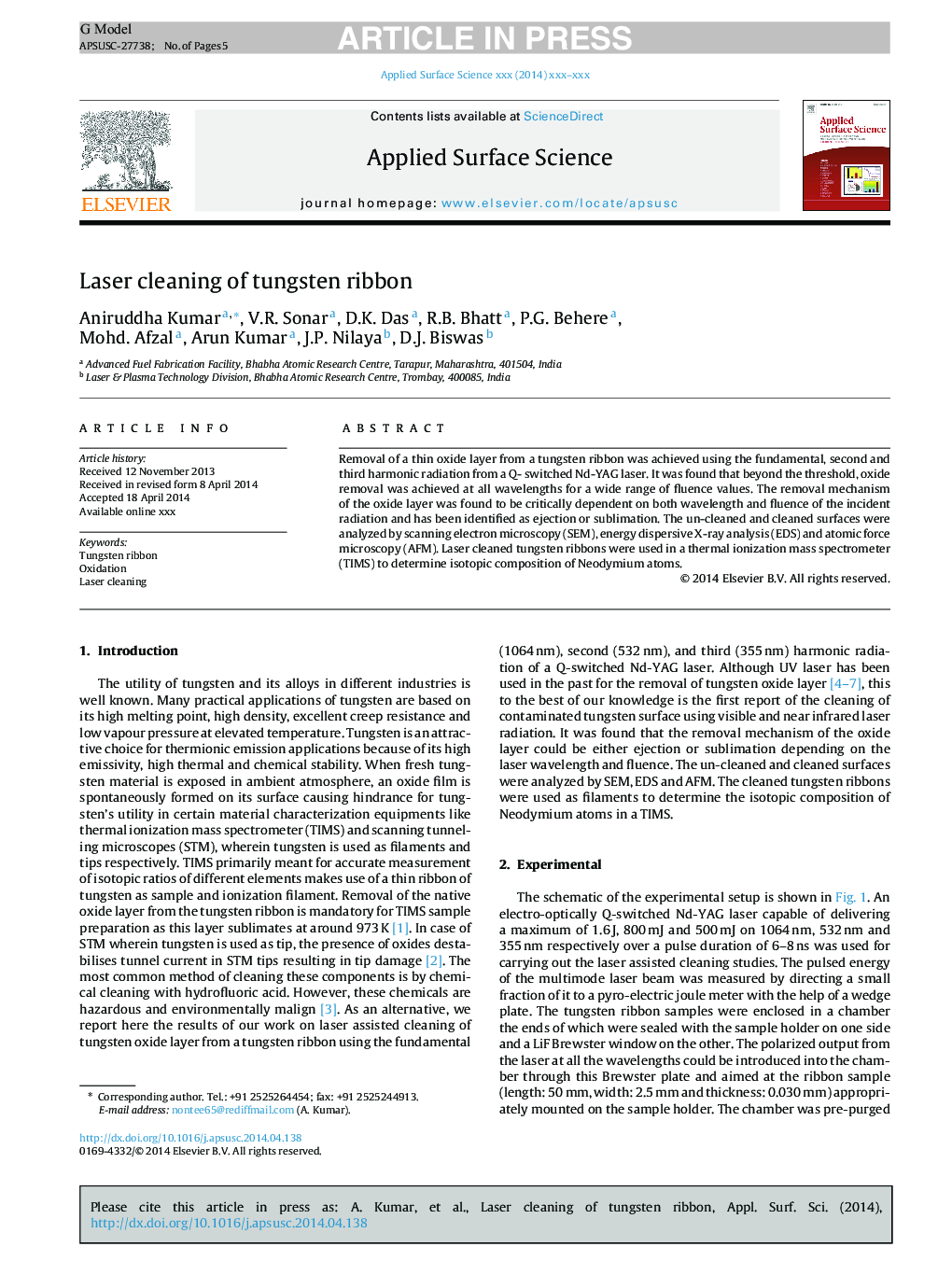| Article ID | Journal | Published Year | Pages | File Type |
|---|---|---|---|---|
| 5350075 | Applied Surface Science | 2014 | 5 Pages |
Abstract
Removal of a thin oxide layer from a tungsten ribbon was achieved using the fundamental, second and third harmonic radiation from a Q- switched Nd-YAG laser. It was found that beyond the threshold, oxide removal was achieved at all wavelengths for a wide range of fluence values. The removal mechanism of the oxide layer was found to be critically dependent on both wavelength and fluence of the incident radiation and has been identified as ejection or sublimation. The un-cleaned and cleaned surfaces were analyzed by scanning electron microscopy (SEM), energy dispersive X-ray analysis (EDS) and atomic force microscopy (AFM). Laser cleaned tungsten ribbons were used in a thermal ionization mass spectrometer (TIMS) to determine isotopic composition of Neodymium atoms.
Keywords
Related Topics
Physical Sciences and Engineering
Chemistry
Physical and Theoretical Chemistry
Authors
Aniruddha Kumar, V.R. Sonar, D.K. Das, R.B. Bhatt, P.G. Behere, Mohd. Afzal, Arun Kumar, J.P. Nilaya, D.J. Biswas,
